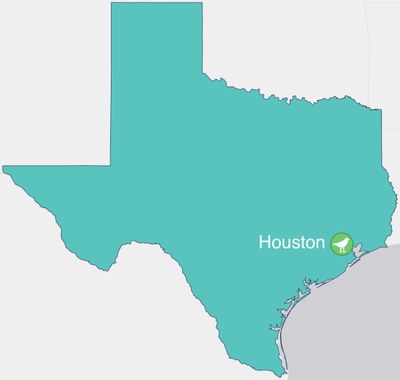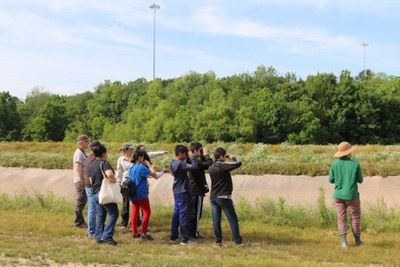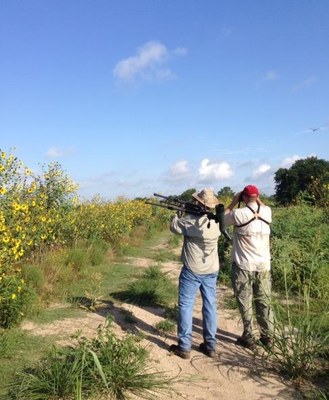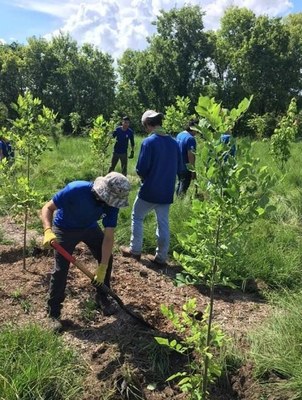Houston: Bird City Texas Certified Community
Learn more about the excellent work being done in Houston to involve their community, improve habitat, and create safer spaces for birds. Below you will find some details about Houston as well as a few examples of the local bird-friendly initiatives they have implemented that led to their Bird City Texas official certification. This list is not exhaustive but hopefully helps give insight on what local communities are doing to support birds and the spaces where they live. We hope these examples help you discover ways your community can work to protect birds and their habitat where you live.
Details
| Population: | 2.3 Million |
|---|---|
| Acres of Parkland: | 5,100 |
| Dates of certification: | 2020-2022 |

Community Engagement
Houston is passionate about birds, community, and community science. They’ve been participating in bird-centric community science for years through their Christmas Bird Counts, Swifts Nights Out, and active eBird and iNaturalist communities throughout the city. For people who want to bring nature in closer to their homes, Houston has multiple native plants sales throughout the city and throughout the year. Those interested in learning more about how native plants can help birds can check out the Houston’s BCT partners; Houston Arboretum, Houston Parks and Recreation Department, Houston Audubon, etc.
Habitat Enhancement and Protection
Houston’s approach to enhancing habitat’s throughout their city is multifaceted and helpful for the people and the birds. For instance, the Houston Parks Riparian Restoration Plan will link 70 parks, spanning more than 1000 acres, which will help foster save passage for animals and people as they migrate through. In addition to planting 200,000 trees, Houston is also keeping the dead ones, as they provide food and shelter for a variety of birds and animals, as long as they’re no danger to the citizens.
Creating Safer Places for Birds
Houston takes the responsibility to reduce bird mortality seriously. They have a 48-page guide that is used to educate and advocate for bird-safe designs for buildings. They’re working towards LEED certification for at least one major public building, and they’re embracing a Lights Out Campaign, aimed at reducing bird mortality during migration.
Want to learn more?
See Bird City Texas tab on the Houston Parks and Recreation Department webpage to learn more about what they are doing to protect birds in their community.
Additional Resources
Certification Criteria Commitment
Certified communities make a three-year commitment to accomplish specific projects, host bird-related events, promote local initiatives, pass bird-friendly ordinances, and more in order to achieve certification. These commitments fall into three categories: Community Engagement, Habitat Enhancement and Protection, and Creating Safe Spaces for Birds. Each category has a minimum requirement of actions a certified community must select. In addition to the example listed above, Houston has also committed to complete the following actions for each of the three categories.
Category 1: Community Engagement (5 required)
- Participates in at least one National Audubon Society community science program annually
- Engage in long-term local bird monitoring programs that incorporate eBird and/or iNaturalist
- Host a completely native plant sale and advertise community-wide for the event
- Host 3 community volunteer planting events per year.
- Quarterly column/outreach/social media outreach centered on native birds
- Speaker/workshop series focusing on birds, wildlife, habitat, environmental stewardship. Min 3/year
Category 2: Habitat Enhancement and Protection (8 required)
- Modify and improve existing habitat for birds, wildlife, and native plant communities
- Create and conserve wildlife corridors and connectivity between habitat areas
- Preserve dead trees in parks/natural areas to provide foraging and nesting habitat
- Adopt native-only recommended list for all new business and residential developments
- Zoning and land use restrictions to buffer nature preserves against development
- Manage natural areas to encourage wildlife habitat, including “No Mow” areas for native plants
- Sponsor at least 5 habitat restoration projects of at least 1 acre in size in the community
- Manage a municipal or public golf course for the benefit of native birds
Category 3: Creating Safer Spaces for Birds (4 required)
- Educate building owners/architecture community about Bird-Friendly Buildings
- Participate in National Lights Out Program
- Provide alternative transportation throughout the community (hike/bike trails, rideshares, bike lanes)
- Prohibit feeding of ducks on community-managed properties


